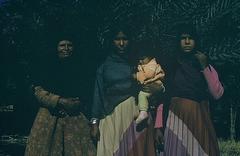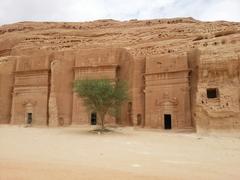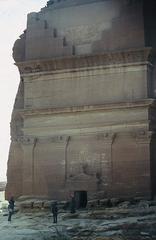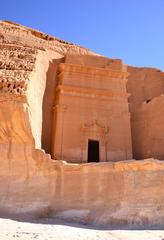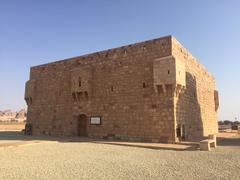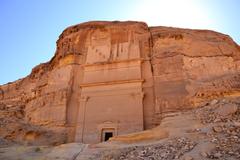
Al-Faqir Fort: Visiting Hours, Tickets, and Historical Insights in Medina Province
Date: 04/07/2025
Introduction
Al-Faqir Fort, a distinguished historical monument in the Medina Province of Saudi Arabia, stands as a testament to the region’s layered Islamic heritage, architectural ingenuity, and the enduring values of charity and community. Often associated with the nearby Al-Faqir Well (Bir al-Faqir), this site has origins dating back over 14 centuries, intertwining with the formative years of Islam during the time of Prophet Muhammad (peace and blessings be upon him). Through its preserved water channels, traditional stone architecture, and lush orchards, Al-Faqir Fort offers a window into Medina’s ancient landscape and the early development of Islamic society.
Recent restoration efforts have made Al-Faqir Fort more accessible and informative, positioning it as a must-visit site for history enthusiasts, pilgrims, and cultural travelers alike. This detailed guide explores the fort’s origins, architectural features, religious significance, and provides practical information on visiting hours, tickets, accessibility, and nearby attractions. Whether you seek historical depth, spiritual reflection, or a unique cultural experience, Al-Faqir Fort is a gateway to understanding Medina’s past and present. (pep.gov.sa; thesaudiboom.com; visitalmadinah.com)
Table of Contents
- Origins and Early History
- Connection with Salman Al-Farsi and the Prophet Muhammad
- Architectural and Engineering Features
- Historical Role in Medina’s Development
- Visiting Al-Faqir Fort: Hours, Tickets, and Tips
- Restoration and Preservation
- Related Heritage and Cultural Sites
- Frequently Asked Questions (FAQ)
- Visitor Recommendations
- Sources and Further Reading
Origins and Early History
Al-Faqir Fort, also known in some sources as Al-Faqir Well (Bir al-Faqir), is situated in the Aliya (Alia) area of Medina Province. Its origins trace back to the era of Prophet Muhammad (peace and blessings be upon him), when the region was known for its advanced agricultural and water management systems. The area, historically referred to as the Prophet’s Charity Area, supported the early Muslim community through a network of wells and orchards, including Al-Faqir, Al-Maytham, Burqa, and others (pep.gov.sa).
Connection with Salman Al-Farsi and the Prophet Muhammad
Al-Faqir Well holds profound spiritual and humanitarian value due to its association with Salman Al-Farsi, a respected companion of the Prophet. Historical records recount that Salman, enslaved at the time, worked in the local orchards. The Prophet Muhammad (peace be upon him) personally facilitated his emancipation, setting a powerful example of justice and compassion. Additionally, the Prophet is reported to have praised the water of Wadi Bathan, which feeds the Al-Faqir Well, saying, “Bathan is on one of the canals of Paradise,” further elevating the site’s religious significance (pep.gov.sa).
Architectural and Engineering Features
Al-Faqir Fort and its well exemplify early Islamic water management and defensive architecture. Key features include:
- Well Structure: The well has a diameter of about three meters, constructed from local volcanic stone for strength and durability.
- Water Distribution: Historically, waterwheels (Al-Sawani) drew water, later replaced by mechanical pumps. Water flowed via arched channels into a central pond, then distributed to surrounding orchards on a regulated schedule.
- Fortifications: The fort is characterized by robust stone walls, partially preserved towers, and a central courtyard, reflecting defensive priorities.
- Gateways and Courtyard: The main entrance is reinforced with local stone; the internal courtyard is landscaped with palm trees and benches, offering shaded spaces for visitors (thesaudiboom.com).
Historical Role in Medina’s Development
During and after the Prophet Muhammad’s migration (Hijrah) to Medina, the city transformed into a center of governance, faith, and culture. The establishment of wells like Al-Faqir was crucial for the city’s food security and agricultural productivity. The fort’s presence also contributed to the protection of trade and pilgrimage routes, especially during periods of unrest and expansion (saudipedia.com).
Visiting Al-Faqir Fort: Hours, Tickets, and Tips
Visiting Hours
- Open Daily: 8:00 AM – 6:00 PM (subject to changes during holidays or special events).
- Best Time to Visit: Early morning or late afternoon for optimal lighting and cooler temperatures.
Tickets and Accessibility
- Entry Fee: Free for all visitors.
- Guided Tours: Available through the Medina Region Development Authority or local tour operators. Advance booking is recommended for in-depth historical insights.
- Accessibility: The site is wheelchair accessible with paved pathways, but some uneven terrain may require assistance.
Travel and Onsite Tips
- Wear comfortable shoes and bring water, especially in hotter months.
- Dress modestly in accordance with local customs.
- Photography is allowed; natural light at sunrise or sunset enhances the site’s features.
- Supervise children and respect all safety barriers.
Restoration and Preservation
Extensive restoration, overseen by the Medina Region Development Authority, has included:
- Protective Fencing: Installation of a one-meter-high iron fence.
- Structural Reinforcement: Use of local stone to strengthen water channels, arches, and the main entrance.
- Landscaping: Planting of palm trees and paving of the courtyard.
- Amenities: Addition of benches and multilingual informational plaques.
These efforts ensure the site’s integrity for future generations while enhancing the visitor experience (pep.gov.sa; thesaudiboom.com).
Related Heritage and Cultural Sites
When visiting Al-Faqir Fort, consider exploring these nearby historical landmarks:
- Prophet’s Mosque (Al-Masjid an-Nabawi): One of Islam’s holiest sites.
- Quba Mosque: The first mosque in Islamic history.
- Ghars Well and Rumah Well: Other significant water sources with their own historical stories.
- Al-‘Ula Old Town and Hegra (Madain Saleh): UNESCO World Heritage sites further afield (History Hit).
Each site contributes to a deeper appreciation of Medina’s role in Islamic civilization.
Frequently Asked Questions (FAQ)
Q: What are Al-Faqir Fort’s opening hours?
A: The site is generally open from 8:00 AM to 6:00 PM; check ahead for adjustments during holidays.
Q: Is there an entry fee?
A: No, entry is free.
Q: Are guided tours available?
A: Yes, through local operators or the Medina Region Development Authority.
Q: Is the site accessible for people with disabilities?
A: Yes, with ramps and paved pathways, though some uneven terrain exists.
Q: Can I take photographs?
A: Yes, but respect signage and avoid flash in enclosed areas.
Q: What facilities are available onsite?
A: Benches and informational plaques; limited restroom facilities—plan accordingly.
Visitor Recommendations
- Combine Visits: Pair your tour of Al-Faqir Fort with nearby religious and historical sites for a comprehensive Medina experience.
- Cultural Awareness: Dress modestly and adhere to local etiquette.
- Stay Informed: Download the Audiala app for real-time updates, maps, and exclusive content.
- Support Local Initiatives: Participate in guided tours and purchase crafts from local vendors when possible.
Sources and Further Reading
- Al-Faqir Well in Medina: Visiting Hours, Historical Significance, and Travel Tips (pep.gov.sa)
- Al-Faqir Historical Well Reopens in Madinah After Restoration (thesaudiboom.com)
- Medina and Mecca Islamic Culture (visitalmadinah.com)
- 18 Can’t Miss Landmarks and Archaeological Sites in Madina (en.ibnbattutatravel.com)
- History Hit - Fort Al-Faqir
- Saudi Arabia Historical Sites Overview (saudipedia.com)

